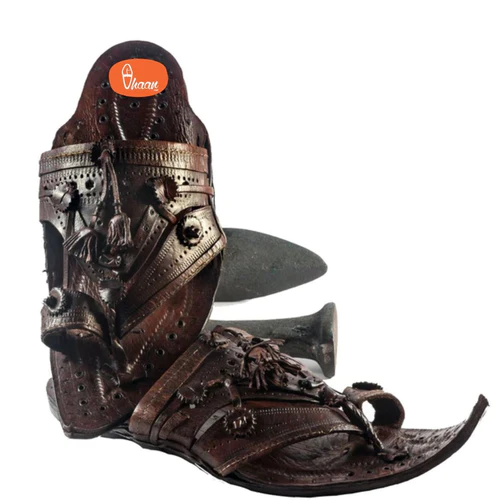Kolhapuri chappals are as originated at 13th century but are still on the trend list. These T-shaped sandals were initially made for the purpose of more comfort and ease as its sole was made with a solid material that helped the people of older times to climb the mountains easily. And because of the thick sole, they were much more durable as compared to the other sandals. It is now being referred to as T-shaped or open toed sandals but the most common and most spoken name has alway been Kolhapuri and will remain the same way.
As per its origination, it was initially being made for the time in Kolhapur which is the southern district of Maharashtra. There are a few older names given to the Kolhapuris like Kachkadi, Pukari, Kapashi, Bakkalnali, and Paytan. These names point out towards the places or villages where they were made. But after the idea started rotating, these chappals were then made in some of the other countries including Pakistan.Pakistani kolhapuris also became famous and were then liked by the people all over the world. These sandals are worn both by men as well as women with the wide range of varying designs. The original pair of Kolhapuri chappals were so heavy that a single pair weighed about 2.1 kilograms because of its thick sole and other materials that were used to manufacture it. But with the passage of time, now, the materials are somehow changed and therefore, they are not that much heavy as they used to be.
Back in the 17th century when there was an era of Hippie movement in the United States, at that time, these kolhapuris became famous even there. The trend didn’t last much longer then, but now, there is a comeback of kolhapuris as recently some of the models were seen wearing these open toed sandals aka kolhapuris.
Lately, the use of leather in the kolhapuri chappals has been replaced with some other material due to the change in the environmental conditions. The kolhapuri chappals for women are so attractive as they use bright hues and intricate designs which give off a traditional reflection and also looks super fantastic when worn with the traditional dress shalwar kameez.
Let's Take A Look At The Evergreen And Beautiful Kolhapuri Chappals

